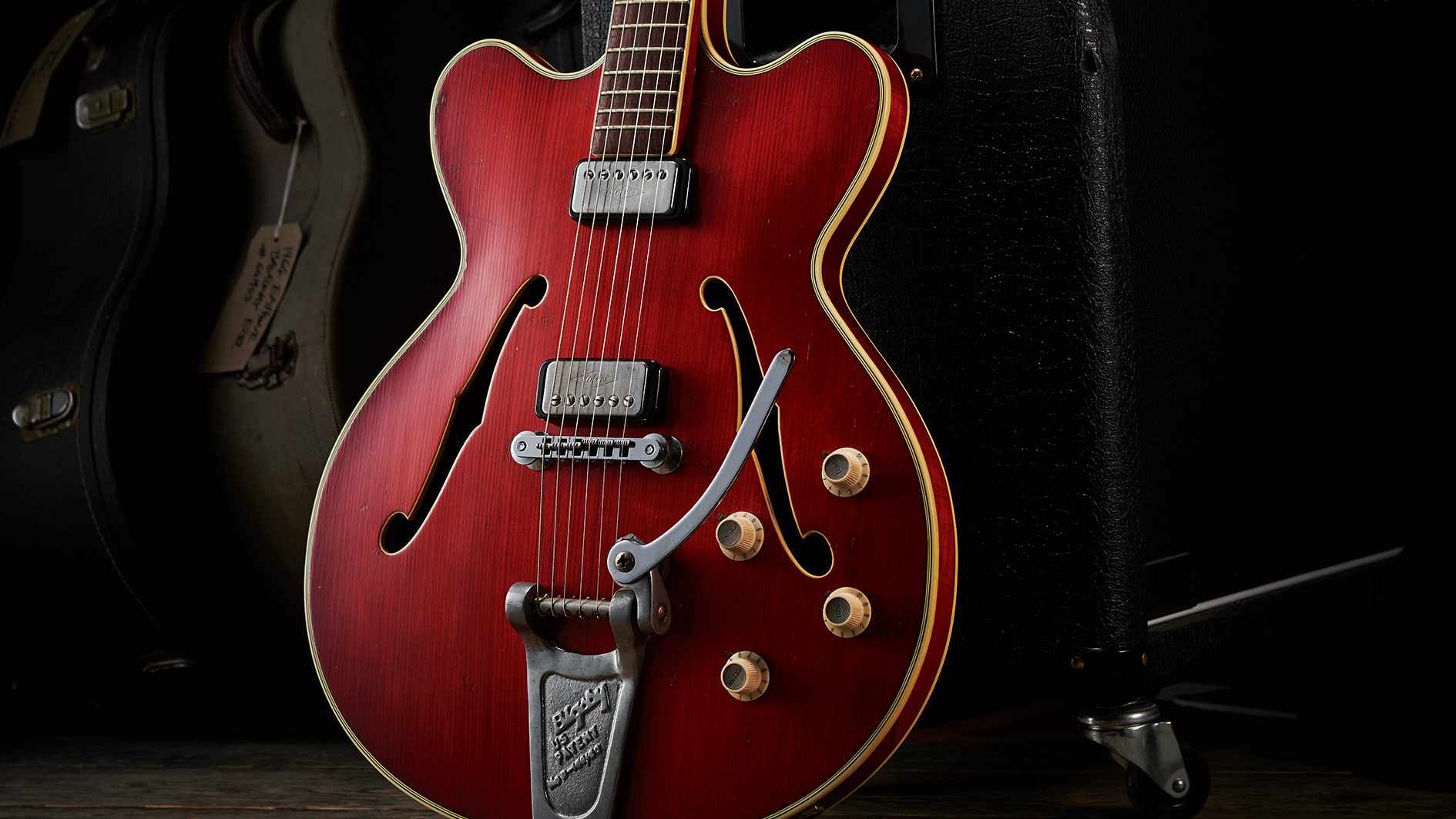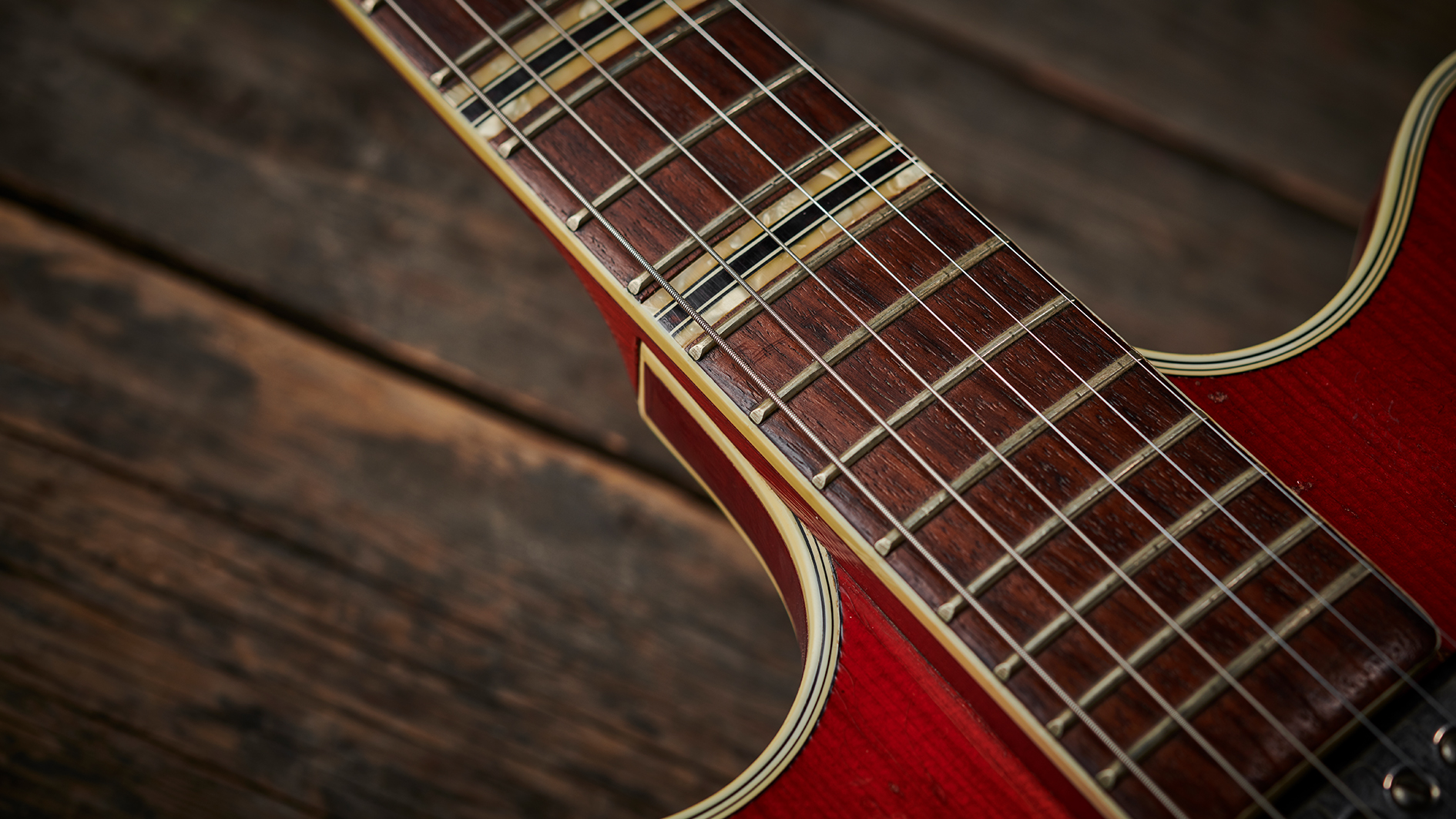Classic gear: Hofner Verithin
With American guitars thin on the ground in the UK in the '50s, Hofner filled the thinline gap...

The Hofner instrument manufacturing company was founded in 1887 in the former Austro-Hungarian town of Schönbach (now Luby, Czech Republic) by Karl Höfner, a skilled violin maker.
In the wake of World War II during the late '40s, Karl’s sons, Walter and Josef Höfner, resettled in Bavaria, Germany, where they began rebuilding the family business, of which guitars had been a significant part since the 1930s.
By the early 50s, Hofner was making electric guitars and soon began to export a great deal of its production, thanks in part to a UK-USA trade embargo that ensured American guitars from the likes of Gibson, Epiphone and Fender were not imported into the UK in any significant number until the early '60s.

As jazz and skiffle music became ever more popular in the UK throughout the '50s, demand for electric guitars increased exponentially. London-based retailers Selmer led the way in the UK for the Hofner brand, its catalogues increasingly featuring American-inspired Hofner guitars with unique American-inspired names such as the Congress, President and Senator (elsewhere, the equivalent Hofner instruments were allocated basic model numbers).
Clearly, American guitar culture was a major influence on the Hofner/Selmer venture throughout the '50s, and in 1960, while following in the footsteps of Gibson’s ES-225TD, ES-350TD and ES-330TD dual-pickup thinline electric archtops, Selmer released the Hofner Verithin (known outside of the UK and Commonwealth as the Hofner model 4574).
Selmer’s 1960 catalogue reads: “Verithin by Hofner... Its fine acoustic tone is transmitted through two Hofner Super Response pick-ups to give unequalled treble performance... Beautifully styled for the Professional Player, russet mahogany finish with cambered rosewood fingerboard, and nickel-silver frets. Individual machine heads, inlaid with mother of pearl marquetry... Body dimensions: 201⁄4" x 161⁄4" x 11⁄4"... 52gns.”
American guitar culture was a major influence on the Hofner/Selmer venture throughout the 50s
With a double Venetian (rounded) cutaway, hollowbody archtop construction, double f-holes, laminated maple back/sides, single bound rosewood ’board, and dual single-coil pickups, the Verithin is highly reminiscent of Gibson’s ES-330TD - especially when finished in Cherry Red (the revised standard finish soon after its release). There are some important differences such as its laminated spruce top (ES-330s have a laminated maple top) and three-piece maple/beech/maple neck (as opposed to the ES-330’s single-piece mahogany neck).
Get The Pick Newsletter
All the latest guitar news, interviews, lessons, reviews, deals and more, direct to your inbox!
Fitted with either a ‘lyre’ tailpiece or Bigsby ‘tremolo’ system throughout the 60s, the Verithin changed pickup type several times. The earliest guitars feature ‘toaster’ single-coil pickups (so called because the metal cover resembles the top of an electric toaster), and by 1961 these had been superseded by ‘diamond’ logo Type 510 single coils.
In ’63, the pickups changed to Type 511 ‘staple’ humbuckers, before reverting back to single coils again in 1967: firstly, to Type 512 ‘blade’ pickups, followed by Type 513 notched ‘blade’ pickups in 1969.
A stereo version of the Verithin appeared in 1964 and the guitar was rebranded the Verithin 64. The following year, a rare triple-pickup version, the Model 65-3, became available, and by late 1965 the guitar was redesigned to feature double Florentine (pointed) cutaways and was subsequently rebranded the Verithin 66.
Much like the Gibson ES-330TD, the Verithin was discontinued by 1972.
The evolution of the Hofner Verithin

1960 - Introduced as Verithin (UK & Commonwealth); Russet Mahogany finish; ‘toaster’ pickups.
1961 - Cherry Red finish now standard; Type 510 ‘diamond logo’ pickups.
1962 - 4x rotary controls replace rectangular control console.
1963 - Addition of Type 511 ’staple’ humbucking pickups.
1964 - Rebranded Verithin 64; Verithin Stereo available.
1965 - Double Florentine cutaway; rebranded Verithin 66.
1967 - Type 512 ‘blade’ pickups are added.
1969 - Addition of Type 513 notched ‘blade’ pickups.
1970 - Polyurethane finish replaces nitrocellulose finish.
1972 - Discontinued.
1963 Hofner Verithin features

SERIAL NUMBER - Four digits and model info (‘Verithin’/‘Bigsby’) ink-stamped onto white rectangular label located on inside back underneath bass side f-hole.
HEADSTOCK - Mother-of-pearl Hofner block logo and ‘bellflower’ inlays; single binding; black nitrocellulose finish.
PLASTICS - White knobs with metal caps reading ‘Volume’ and ‘Tone’; pearl/white tuner buttons; three-ply (w/b/w) nut; black pickup surrounds; black truss rod cover; two-ply (w/b) neck heel cap.
HARDWARE - Nickel-plated pickup covers and Bigsby ‘tremolo’ system; non-original adjustable bridge; six single open-back tuners; adjustable truss rod.
PICKUPS - Two ‘diamond’ logo Type 510 single-coil pickups with six adjustable polepieces; individual volume/tone controls; four pots; two 0.1uF tone capacitors; no pickup selector switch.
BODY - 11⁄4-inch deep; fully hollow; double Venetian cutaway; arched laminated spruce top; two single-bound f-holes; laminated maple back and sides; six-ply (w/b/w/b/w/b) top and back binding; Cherry Red nitrocellulose finish.
NECK - 25 1⁄2-inch scale length; three-piece (maple/beech/maple); single-bound rosewood ’board; six seven-band inlays (pearloid/ black/white/tortoiseshell/white/black/pearloid); 22 silver-nickel frets and zero-fret.
“For years, the only 12-string acoustics I got my hands on, the necks always pulled off after a bit. I earned a lot of money replacing them!” Why one of the UK’s most prolific luthiers is a bolt-on acoustic die-hard
“While the odd corner has clearly been cut, these are true Gibsons with all the individuality that this brand exhibits”: Gibson J-45 Special and Hummingbird Special review









